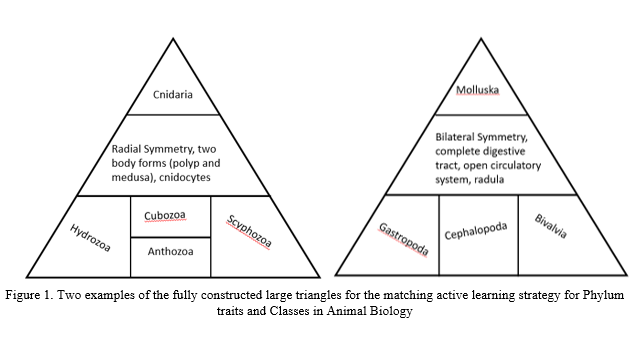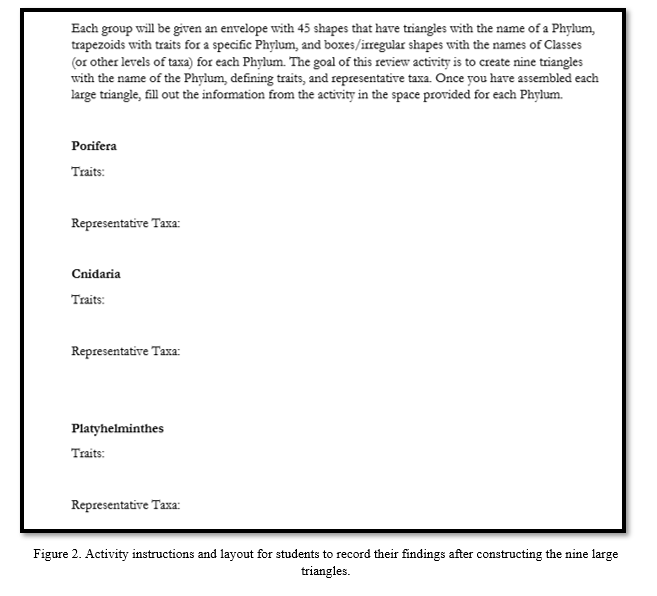Matching Activities - Still useful in Post-Secondary Instruction
By Dr. Michele Larson
I recall as a child playing matching games where you had to match the mother animal to the offspring. In elementary school and even secondary education, I remember having matching questions on tests that usually were testing vocabulary. As a high school biology instructor, I even used the matching questions as a testing method. But it wasn’t until recently that I found a method for incorporating this idea into my college courses as an active learning strategy.
My inspiration for this activity came from the symposium for LAMP fellows. As I wander through the poster and listened to presentations, I was drawn to Karagh Brummond’s use of matching using triangular pieces of paper to build larger triangles on a single topic. The top of the large triangle was the overall topic and the information on other aspects of the topic made up the bottom of this large triangle. I instantly wanted to incorporate this method into my own course and after some thought applied it to one of the units that had a lot of memorization and new terminology, but few activities for students to use this information and construct mean about the topic. So, I created a large triangle with an Animal Phylum in the top triangle and then made a single middle section that contained traits specific to the Phylum. The bottom of the large triangle included the names of the Classes for the Phylum (Figure 1).

To implement this strategy in my Animal Biology course, I cut apart the nine triangles (one for each Phylum we cover in the course) and place all the pieces into an envelope. Each table group was then given the instruction sheet (Figure 2) and an envelope and asked to build the nine triangles. During the class, my teaching assistants, learning assistant, and I walked around the room and checked that students were correctly constructing the large triangles. After all nine triangles were constructed, students filled out the information on the assignment sheet (thus reinforcing the content in an additional way).

Although I was excited about having a new activity to help my students process and understand this information, I was also hesitant in using it as I feared it may fail and create more confusion for my students. This however is a common issue with creating and implementing new curriculum of any kind, and I am always willing to try new techniques, ask students for their feedback, and make improvements (or scrap an activity entirely). I was gratified when students commented that this was a helpful and easy way for them to reinforce the traits and terms used in lectures. Sometimes, simple game-like activities are the most engaging and effective for student learning.

